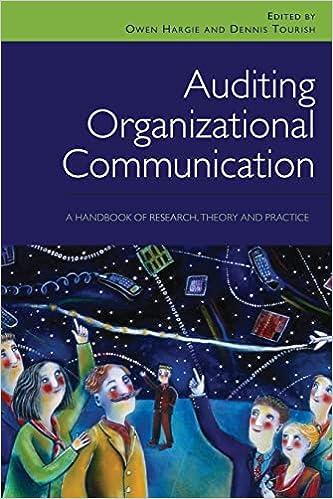Question
11.4.1 Dynamic adjustment to a shock in the 2-bloc model In this section, we will provide the mathematics behind the dynamic adjustment to shocks in
11.4.1 Dynamic adjustment to a shock in the 2-bloc model In this section, we will provide the mathematics behind the dynamic adjustment to shocks in the 2-bloc model. We will use the example of the case where there has been a positive permanentdemand shock in bloc A (but not bloc B) in period 0. The intuition and explanation forthis example is contained in Section 11.2.5 of the main body of this chapter. We assume that bloc A and bloc B were in equilibrium in t = 1.So V11=AA?+q=ye [Jilzrg1zfl zr, =7ri1 = HT. and yf, =AB F a = ye. such that A" =AB. Then in t = 0, autonomous demand in bloc A increases permanently to AA]. All three actors first work out the changes to equilibrium values. Bloc A and bloc B were identical before the shock, so thatq = Oand F = AA ye = A8 ye. After the permanent demand shock in bloc A, the new medium-run equilibrium becomes: ye =AA' F" +I w=MVW _,/ AA' + A = 2 ye AA' _ AB and a! = . What happens in period 0? y,=ye+AA'AB 773:T+(y3_)e) =nT+(AA'AB). The central bank in bloc A, the central bank in bloc B and the foreign exchange market can now forecast that next period's Phillips curve in A will be nf=+(Vfye) Its also common knowledge that the central bank in bloc A has a monetary rule (MR) that defines the trade-off between output and inflation reductions each periodhence also next period, period 1.To simplify the notation, we assume at = ,6 = l: )4 Ye = (f NT) (monetary rule; bloc A) Putting period 1s Philllips curve and monetary rule equations together, all three rational actors can work out the combination of inflation and output in period 1 in bloc A that the central bank of bloc A will want to see. Thus:
=M A T n4=i>_:_) _ (HQHT) __ AA, AB yE_Ty2_ Now all three actors know the output level, yf, which the central bank in blocAwants to achieve next period. To do so the only instrument bloc A's central bank has at its disposal is r3. This has to be set to solve: =M-@+% The problem is that qo depends on r6 via the UIP condition: rgrg=Q1ECI0 dd= The CBs in both A and B must respect this set of equations. Summing both sides we get 00 A B _ / ~ E _ / A B -*'%: (rt rt) q qo smce JILL qt _ q . Moreover rt .r, > r . Hence f: (r? r5) = i (or r) (r? a = a go. Now assume that rA and q both converge to their new equilibrium levels F*',qiata proportional rate of A. The derivation of A follows the same method as in the small open economy (see the Appendix of Chapter 9), so we no longer assume ,6 = 1. L=(zr"21T)2+i+3(y*ye)2 => (MnT)+(y"ye)=o => (y? ye) = n}? H) 1 =Mwhr7:#l From this we derive A: 1 1 (y: _Ye) = E(JT-? nT) and (V14 -ye) = _m( _ JTT) MortHt #3 (ITSHT)_1+B' _ _ I A_u a_.r _, . Hence ((rf - V) (QB - r" )) = "L; Et = q qo- Slnce y? = ye that implies
iii-ye= =
Use the mathematics from Section 11.4.1 of the Appendix to derive the RX curve after a negative demand shock in bloc B.
textbook: Marcoeconomic: institutions, instability and the financial system
Step by Step Solution
There are 3 Steps involved in it
Step: 1

Get Instant Access to Expert-Tailored Solutions
See step-by-step solutions with expert insights and AI powered tools for academic success
Step: 2

Step: 3

Ace Your Homework with AI
Get the answers you need in no time with our AI-driven, step-by-step assistance
Get Started


